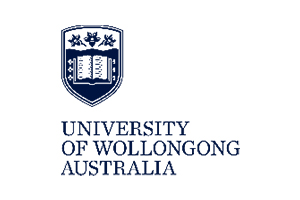The latest Australian Institute of Health and Welfare (AIHW) report Mortality and life expectancy of Indigenous Australians 2008 to 2012 shows that estimated life expectancy at birth for males was 69.1 years and for females 73.7 years. These may sound like good figures – if we were living in the previous century. The sad fact is that they are 10.6 years and 9.5 years lower respectively than the life expectancy of non-Indigenous males and females.
While the report by the AIHW – which is the federal government’s main data collection agency on health trends - did show small improvements in Indigenous life expectancy, the gains had done little to close the longevity gap because non-Indigenous life expectancy improved much more markedly in the decade to 2012. In some diseases, including cancer, the gap was actually widening”: non-Indigenous Australians were found to be living longer, with Indigenous mortality rates rising.
One encouraging trend was a 57 per cent decline in the Indigenous infant mortality rate between 2001 and 2012 (with a 26 per cent decline in the non-Indigenous rate). Over that period, there was a significant decline in the mortality rate difference between Indigenous and non-Indigenous infants, with the gap, which still continues, more than halving.
These large declines in infant mortality in recent decades are likely to be the result of large reductions in deaths from sudden unexpected death in infancy (which includes SIDS), and deaths from conditions originating in the perinatal period (AIHW 2013).
“Indigenous diabetes rates are three times the rest of the population”
However the reason for the adult longevity gap is chronic disease, with four groups accounting for more than two-thirds of the problem: circulatory disease 24 per cent of the gap, endocrine, metabolic and nutritional disorders 21 per cent, cancer 12 per cent and respiratory diseases 12 per cent.
Between 2008 and 2012, cancer accounted for 20 per cent of all Indigenous deaths, with lung cancer, the most common cancer death, accounting for 5.1 per cent of deaths in Indigenous males and 4.7 per cent in females. Lung cancer rates rose slightly in the Indigenous population from 2001 to 2012.
A second report released by the Australian Bureau of Statistics showed one in 10 indigenous people had diabetes, which is three times the rate of the rest of the population.
It is well known that chronic diseases are largely lifestyle based, which in turn relates very much to social determinants such as the location where people live, inadequate housing, poverty, poor education, lack of job prospects, access to health services, transport issues, high incarceration rates, and so on.
Primary health care services are important but they are hamstrung by providers’ inability to adequately address these social determinants, this being a socioeconomic and political issue.
Martin Laverty, the chief executive of the Royal Flying Doctor Service and the founder of the Social Determinants of Health Alliance, said too little had been done by governments to improve the living conditions of indigenous Australians. (SMH 10/09/14)
"Diabetes is a disease that is entirely preventable, but we don't yet have, as a nation, a sufficient commitment to recognising that where you live and your geography, influences your risk of chronic illness," he said.
He highlighted the broadly supported Senate report in March 2013 that had recommended five ways in which the government must act to address the social factors that cause ill-health, yet that report was "still sitting on a shelf awaiting a government response".
Senate Report’s List of Recommendations
(1) The committee recommends that the Government adopt the WHO Report and commit to addressing the social determinants of health relevant to the Australian context.
(2) The committee recommends that the government adopt administrative practices that ensure consideration of the social determinants of health in all relevant policy development activities, particularly in relation to education, employment, housing, family and social security policy.
(3) The committee recommends that the government place responsibility for addressing social determinants of health within one agency, with a mandate to address issues across portfolios.
(4) The committee recommends that the NHMRC give greater emphasis in its grant allocation priorities to research on public health and social determinants research.
(5) The committee recommends that annual progress reports to parliament be a key requirement of the body tasked with responsibility for addressing the social determinants of health.
For now we can only hope the Closing the Gap initiatives for general practice and Aboriginal Community Controlled Health Services continue to be supported and that the disadvantaged, including Indigenous people, are exempt from the Government’s co-payment proposal for GP visits should this pass the Senate.
Additionally, measures like smoking cessation programs need to be stepped up, not wound down as appears to be the current fashion http://blogs.crikey.com.au/croakey/2014/08/25/indigenous-smoking-program-cuts-risk-widening-the-gap/?wpmp_switcher=mobile
In fact, the Australian government has recently announced funding cuts of $130 million over five years to the Tackling Indigenous Smoking program, which amounts to more than one-third of the program’s annual funding.
If such an important initiative runs out of breath, so will the many people whose future wellbeing depends on being encouraged and supported to adopt healthier lifestyles.















